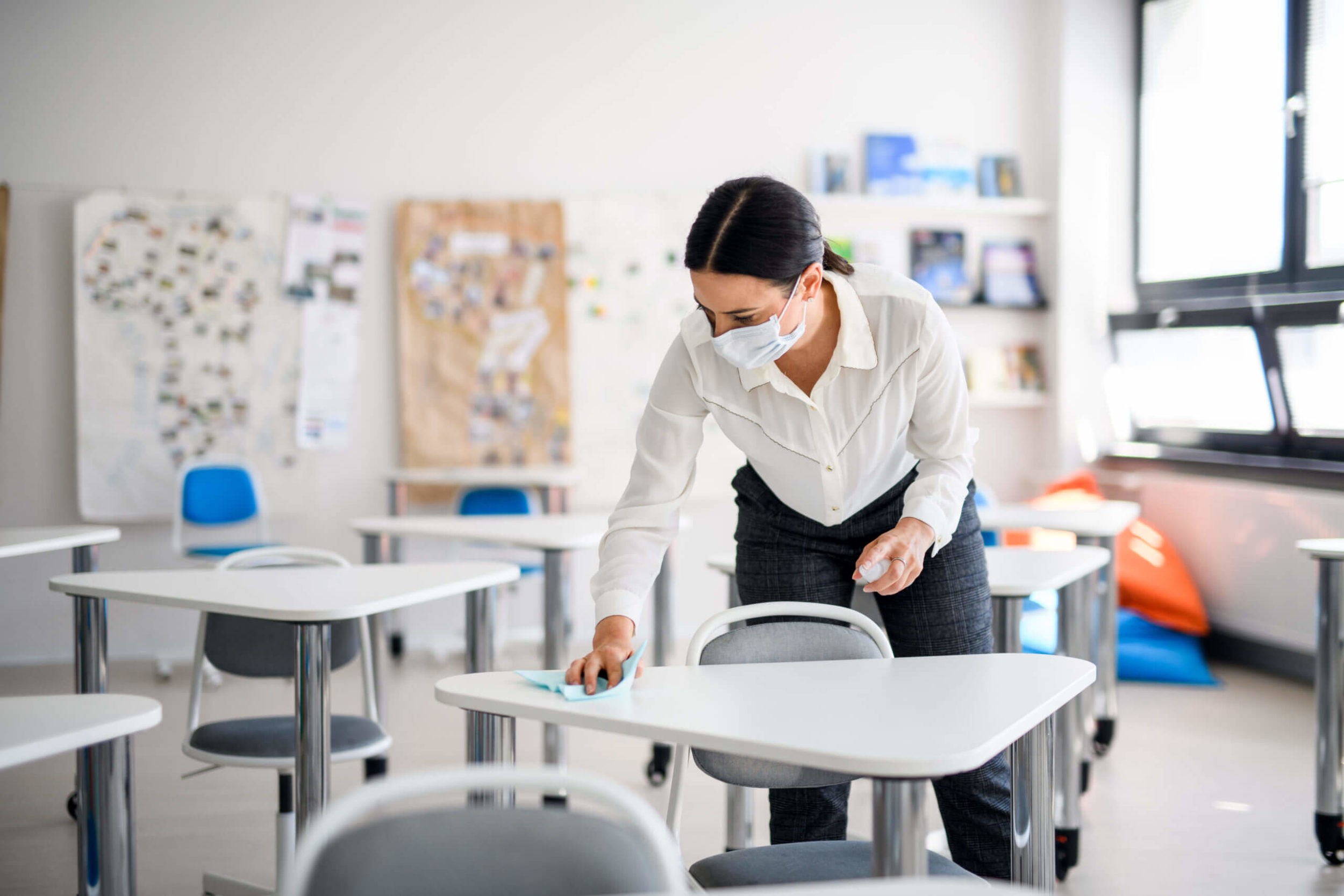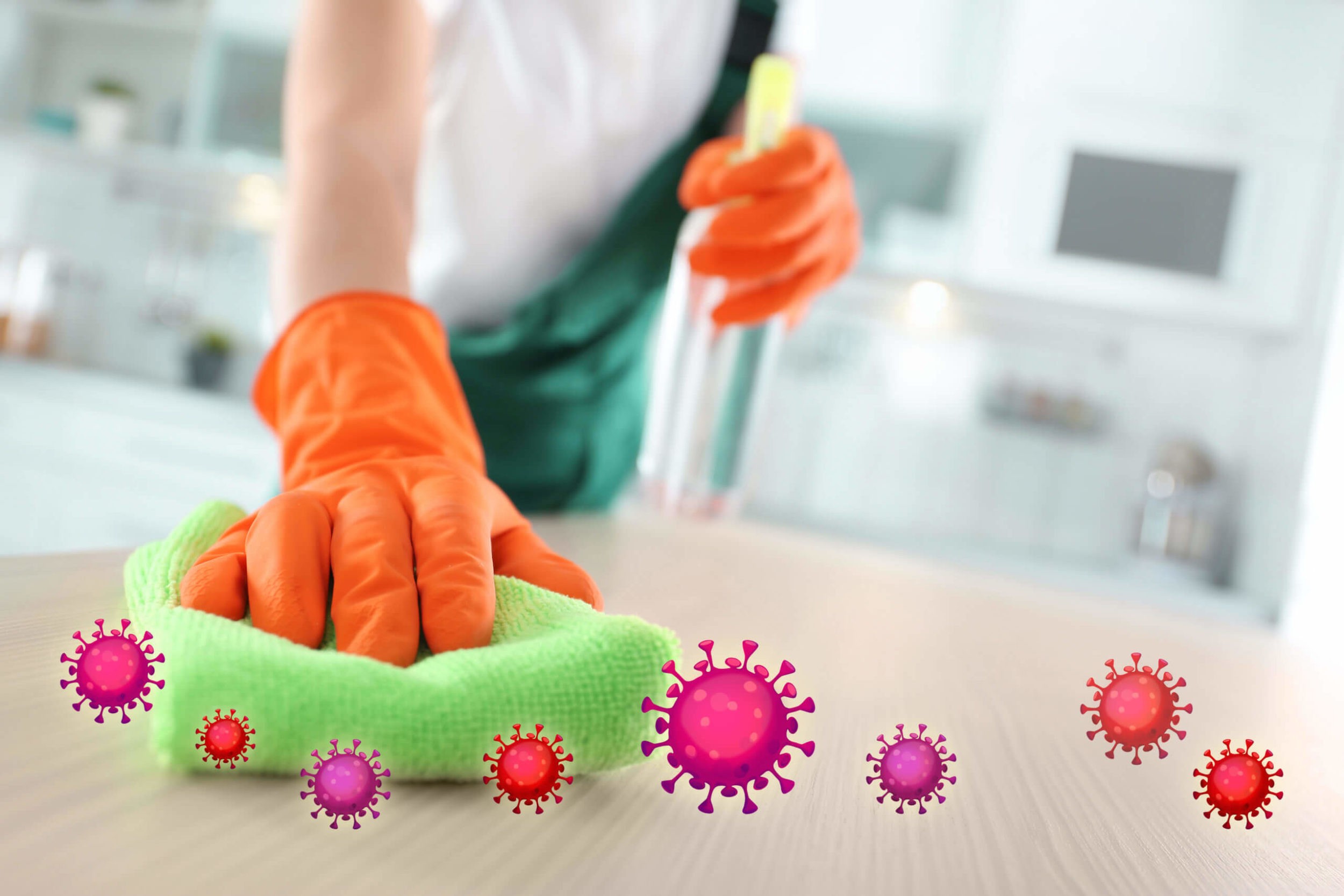The Most Effective Ways to Clean a Classroom


According to the NAESP, (National Association of Elementary School Principals), 13.36% of a child’s life from birth to high school is spent in school. While most of their time is spent at home, school hours are critical and are often where germs are most spread. While cleaning and sanitizing in schools is important all the time, it becomes vital during a pandemic.
When considering how to clean a classroom, the difference between cleaning, sanitizing, and disinfecting is what will help you most effectively determine the best classroom cleaning procedures.
Cleaning removes dirt, crumbs, dust, and germs from objects and surfaces. While cleaning often requires the use of soap and water, sanitizing uses heat and chemicals to decrease the number of germs to a safer level. Keep in mind that what may be considered safe in your home differs from what is considered safe in a classroom. Disinfecting kills germs and bacteria on surfaces using harsh chemicals but does not remove them from the surface. Therefore, a combination of the three is most effective for keeping schools and classrooms safe.
Classroom Cleaning Procedures
With students and teachers on tight schedules, your cleaning routine should be kept consistent too! Standard cleaning practices regularly can mitigate the number of viruses and bacteria being spread between faculty and students.
Here are some of our top tips to keep your classroom clean:
Follow label instructions: Combining certain disinfectants and cleaning products can greatly reduce their effectiveness. Making sure you are using the right products in the right sequence will allow for a safer learning environment. Disinfectant often needs to be in contact with the surface for 3-5 minutes to be effective. Read carefully!
Protect yourself: Ensure those using cleaning and sanitizing products are being cautious by wearing the correct personal protective equipment to keep themselves safe. This is an important step that can often be overlooked.
Know your environment: if the surface is visibly dirty, immediately take the time to remove what you can before moving on to sanitizing and disinfecting. Otherwise, you can move on to sanitize and disinfect all of the surfaces that students and faculty come in contact with.
High-touch surfaces in schools: The following high-touch surfaces should be cleaned with a disinfectant wipe or spray daily as they are frequently used by the student body.
· Shared toys, remotes, phones, desks, keyboards
· Counters
· Lunchroom tables and chairs
· Doorknobs and handles
· Stair rails
· Light switches
· Sinks
· Sharpeners
Be cautious when removing waste: handling things like used tissues can be dangerous; be sure to protect yourself by wearing gloves when emptying wastebaskets and implement a no-touch option when possible.Keeping habits consistent when considering how to clean classrooms will create the safest environment for students and educators. Increased attention to high-touch surfaces in schools can significantly reduce the spread of germs between students and staff. Recognizing when to clean, disinfect, and sanitize is important when considering the schedule and cleaning supplies that work best for schools. Happy cleaning!



